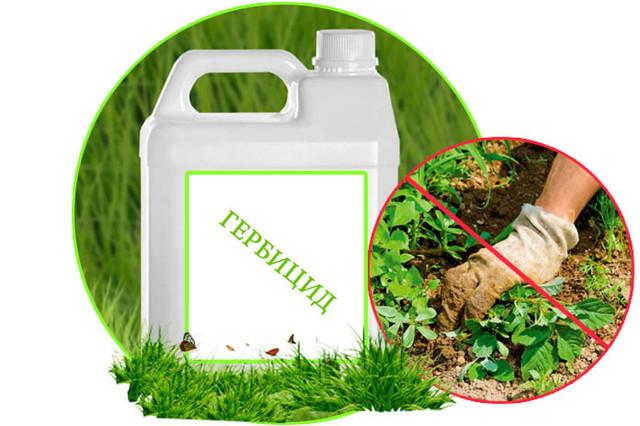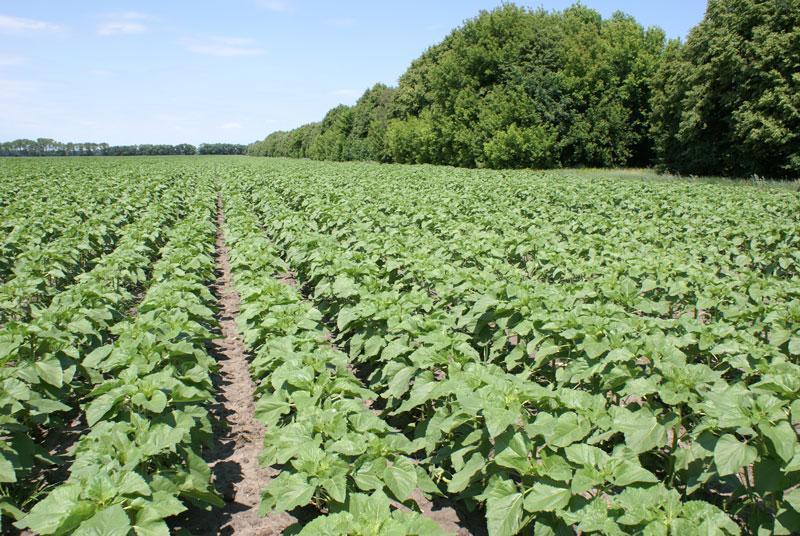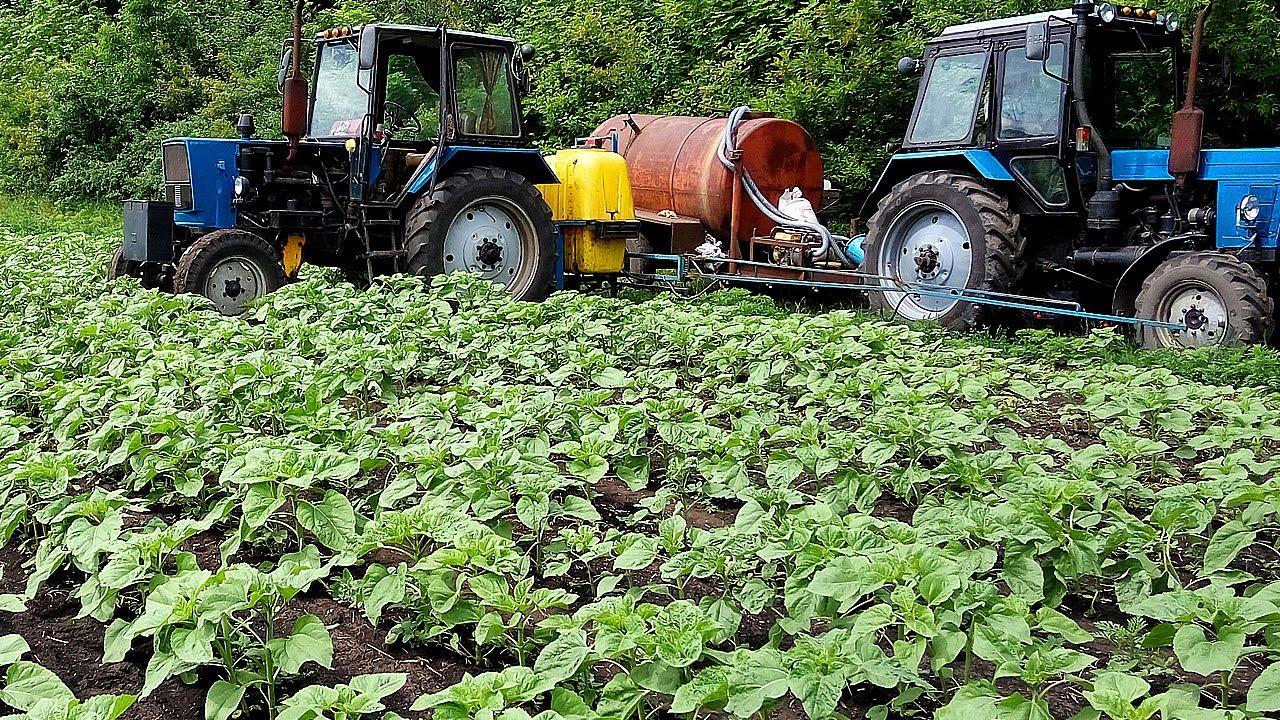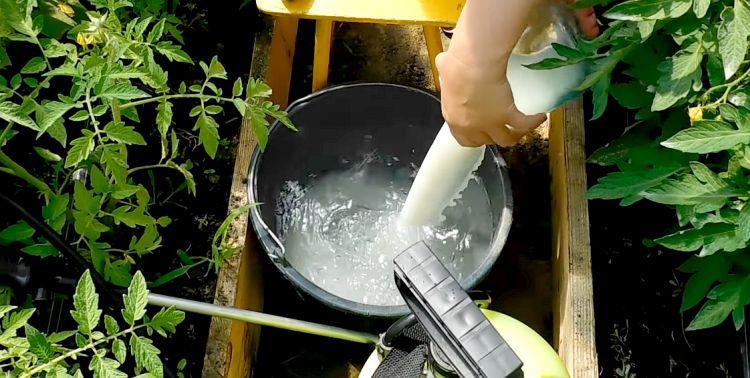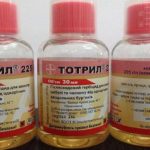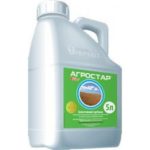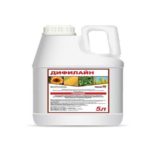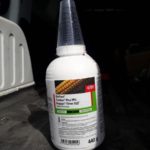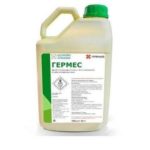Using "Grand Plus" helps to cope with various types of weeds. The drug is an effective herbicide that has a selective effect. The composition successfully copes with annual dicotyledonous weeds. With its help, it is possible to destroy field thistle, ragweed, and sparrowweed. The substance also inhibits the growth of chickweed, mustard and other plants.
Composition and release form of the herbicide
The active component of the product is considered to be tribenuron-methyl.In 1 kilogram of the product there are 750 grams of this component. The composition belongs to the chemical class of sulfonylureas. It is produced in the form of water-dispersible granules.
The product is sold in packages of 600 grams. It contains 30 water-soluble sachets of 20 grams each.
The principle of action and purpose of the drug "Grand Plus"
The active component of the herbicide is tribenuron-methyl. This substance belongs to the chemical class of sulfonylureas. The active substance is characterized by systemic activity. It is absorbed by the foliage and root system of plants and easily moves through the structure of the weed. In sensitive plants, the herbicide inhibits the enzyme acetolactate synthase. This substance takes part in the production of valuable amino acids. When the enzyme is suppressed, grass growth quickly stops, and then its death occurs.
At the same time, many cereal plants are resistant to the active component of the product. This applies to winter and spring wheat. This is less true for oats and barley.
The main advantages of the herbicide include the following:
- It is highly effective. Moreover, the composition is selective in relation to cereal plants.
- It has a wide range of effects on weeds, which are resistant to hormonal herbicides - MCPA, dicamba, 2,4-D. Therefore, the product can be used against many types of weeds, including those resistant to other herbicides.
- Suitable for use in cold spring. The substance does not provoke toxic effects.
- It decomposes in the soil structure in a short time.Therefore, there are no restrictions on other plants, subject to the rules of crop rotation.
- Affects enzymes that are found exclusively in plants. Therefore, the substance is almost safe for animals and people.
- It is a systemic product that is absorbed by the foliage.
- Helps significantly reduce the herbicide load on the soil.
The development of sensitive weeds stops within a couple of hours after using the product. At the same time, it is possible to significantly reduce the consumption of useful elements and water. Noticeable manifestations occur 2-3 days after treatment. In this case, the complete death of weeds is observed later. This happens after 10-15 days or later - it all depends on the weather.
Dosage and use of the product
To avoid an overdose of the product, it is important to configure the equipment correctly. When processing, it is important to avoid repeated application, turning or slowing down. Working fluid consumption, on average, is 200-300 liters per 1 hectare. It is important to avoid contact with other crop plants, as they may be susceptible to this herbicide.
The most pronounced effect of “Grand Plus” is produced during the active development of young weeds. It is recommended to use it at the stage of appearance of 2-4 leaves. Symptoms vary depending on the grass variety, growth stage and weather.
The first signs in the form of chlorosis and necrosis are observed several days after treatment. In this case, after 1-2 weeks the weed completely dies. When using the composition for less susceptible weeds, in a later period or during drought, signs may appear later.Some weeds that are moderately sensitive remain green for a long time. However, their development has already been suppressed.
A couple of hours after treatment, the grass stops developing and stops absorbing water and minerals from the soil structure. Thus, there is no competition with cereal crops.
It can be concluded that increased selectivity of the herbicide in combination with effective control of weed development at an early stage of its development helps to achieve high yields of cereals. To get this effect, you should adhere to the rules for using the substance. The dosage of the product is given in the table:
| Culture | Norm of substance use, grams per 1 hectare | Weed | Features of use | Waiting period (number of treatments) |
| Oats | 15-20 | Annual dicotyledonous weeds, including those resistant to 2,4-D and 2M-4X | Plantings should be sprayed at the 2-3 leaf stage. This is done at the initial stage of tillering and in the early stages of weed growth. 200-300 liters of working solution are required per 1 hectare. | 60 (1) |
| Spring and winter cereals, except oats | 20-25 | Annual dicotyledonous weeds, including 2,4-D and 2M-4X resistant, field thistle | It is necessary to spray crops at the tillering stage and at the initial stages of weed growth. Winter plantings are treated in the spring. 200-300 liters of working solution are required per 1 hectare. | |
| Sunflower, which is resistant to the active substance of the drug | 25-50 | Annual and some perennial dicotyledonous weeds | Plantings should be sprayed in the phase from 2-4 to 6-8 true leaves and in the initial stages of weed growth. For 1 hectare it is worth using 200-300 liters of working solution. |
Precautionary measures
The product belongs to the third hazard class.This means that it is a moderately hazardous compound. However, precautions still need to be taken. For this purpose, personal protective equipment is used.
Product compatibility
You should not combine the substance in tank mixtures with insecticides from the group of organophosphorus compounds. This can cause crop poisoning.
Storage Features
The composition can be stored at temperatures from -10 to +30 degrees. The shelf life of the composition is 3 years.
Herbicide analogues
Effective substitutes include:
- "Agrostar";
- "Gersotil";
- "TriAlt";
- "Sanflo."
"Grand Plus" is considered an effective herbicide that helps control many weeds. It is important to strictly follow the instructions for its use.

